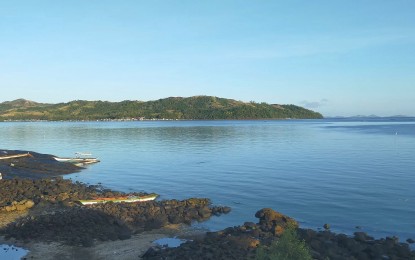
RED TIDE-HIT. The seawater in the island town of Zumarraga, Samar. Red tide presence expanded in Samar Island this week, the Bureau of Fisheries and Aquatic Resources said on Monday (July 22, 2024). (Photo courtesy of Zhonne Cabueños)
TACLOBAN CITY – Red tide presence expanded in Samar Island this week with nine bays now affected by this toxic organism, the Bureau of Fisheries and Aquatic Resources (BFAR) said on Monday.
In its advisory, the agency said red tide has also been detected in Villareal Bay in Villareal, Samar, based on the latest seawater sampling.
Last week, BFAR said eight bays were contaminated with red tide toxins, with some parts of the sea showing red discoloration.
Toxins were found in the waters of Daram Island; Zumarraga Island; Maqueda Bay in the towns of Jiabong, Motiong, Paranas, San Sebastian, Calbiga, Pinabacdao, and Hinabangan; Cambatutay Bay in Tarangnan; Irongirong Bay in Catbalogan City; and the coastal waters of Calbayog City, all in Samar province.
In Eastern Samar, the red tide-affected areas are the coastal waters of Guiuan; and Matarinao Bay in the towns of General MacArthur, Quinapondan, Hernani, and Salcedo.
In the first week of July, red tide presence was detected in just three bays, according to the BFAR regional office here.
“Currently, a red discoloration has been observed in the Samar Sea. According to the analysis of seawater taken from this area, there is the presence of Pyrodinium Bahamense, a toxic microorganism that causes paralytic shellfish poisoning (PSP),” the bureau said.
The visible red discoloration indicates a high presence of toxic microorganisms, it noted.
Everyone is strictly advised not to collect, sell, or eat any type of shellfish, including small shrimps from the Samar Sea, the BFAR advisory said.
A red tide occurs when certain types of algae grow out of control. The name “red tide” comes from the fact that the overgrowth of algae can cause the color of the water to turn red. (PNA)
